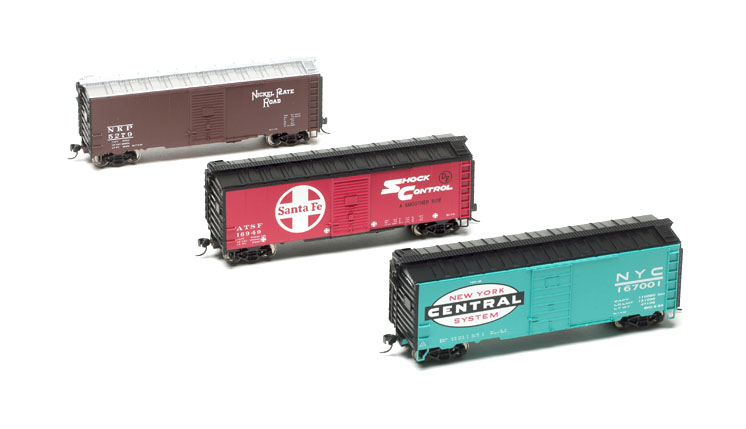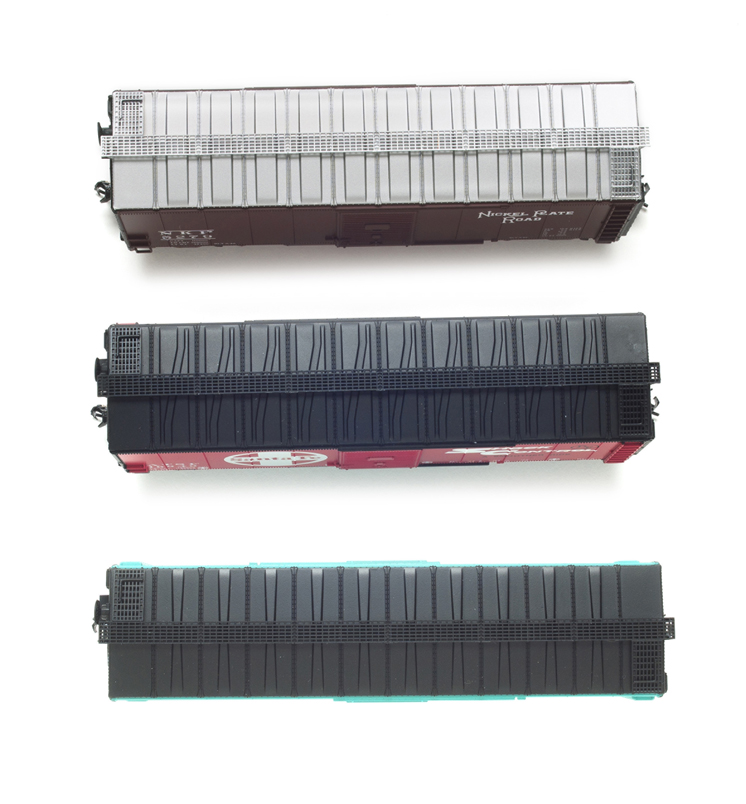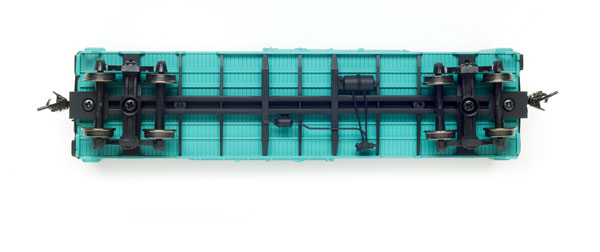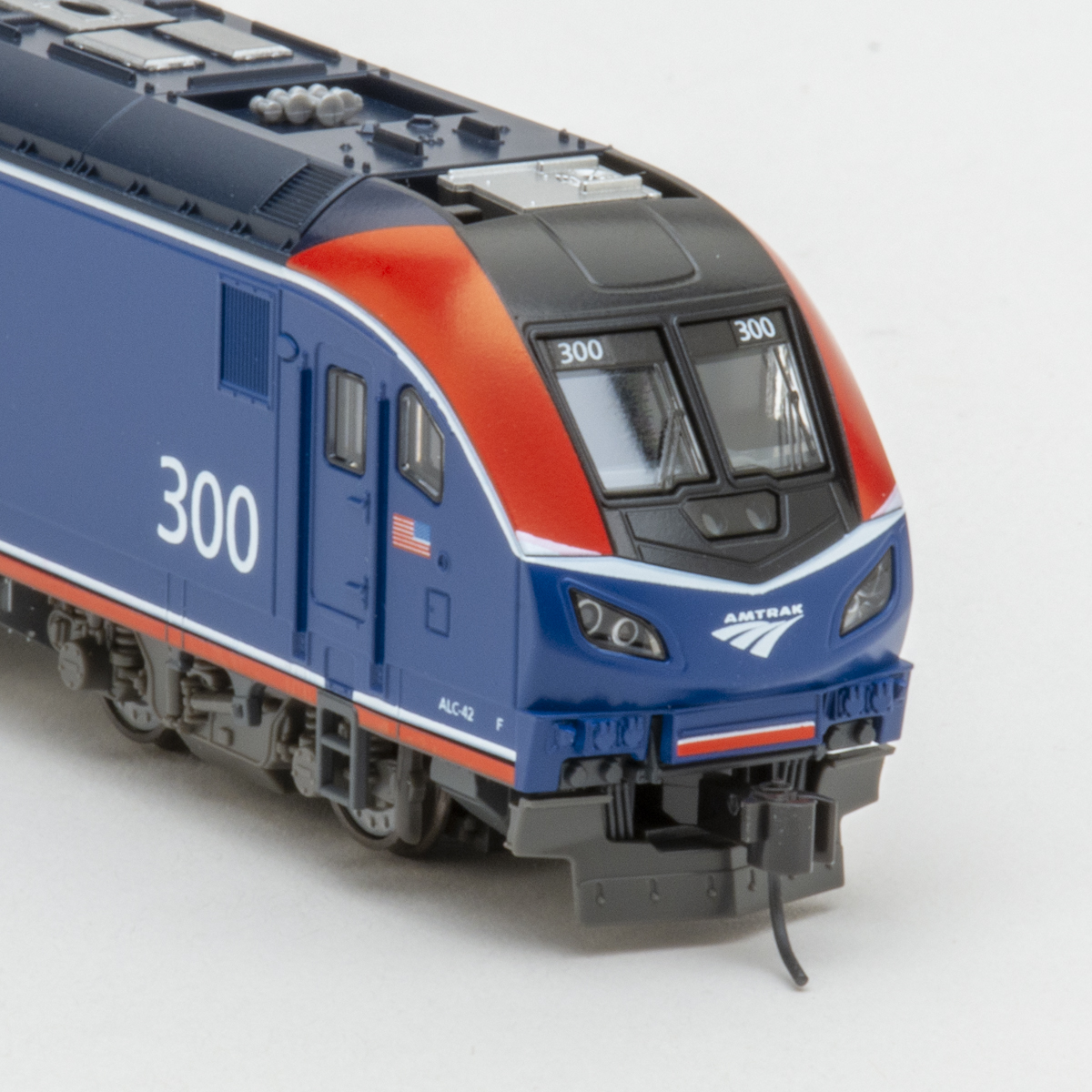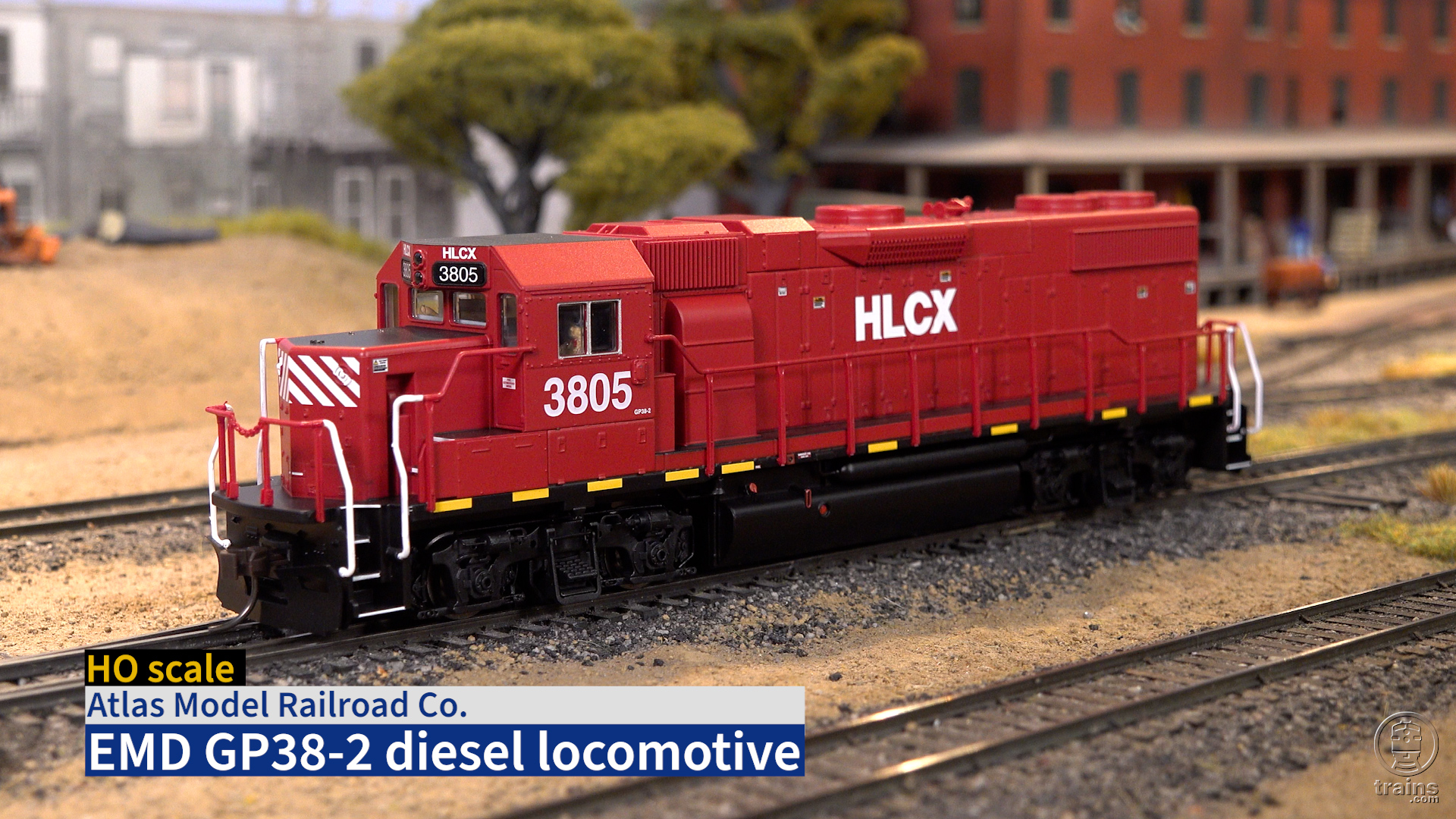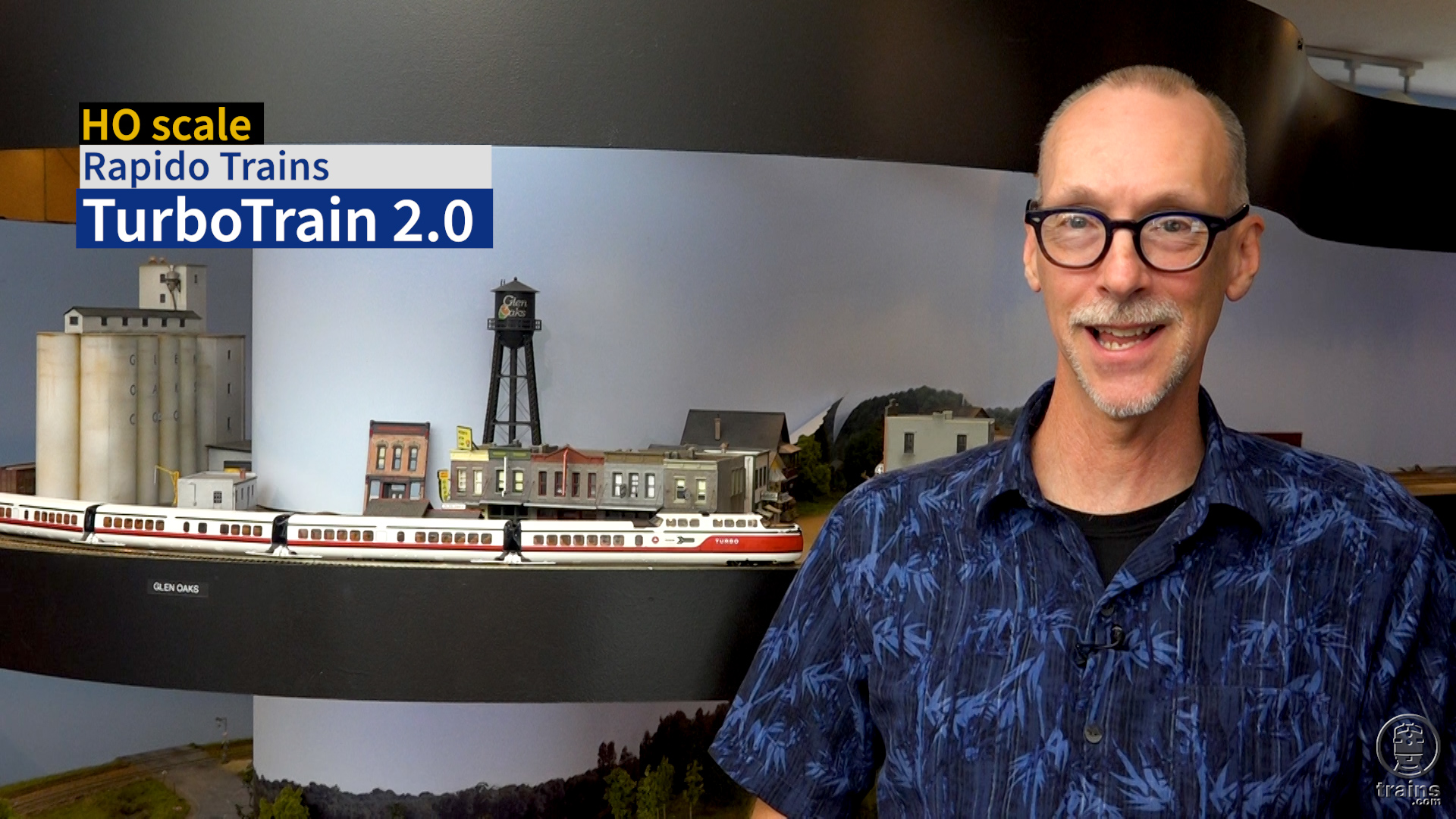Three all-new ready-to-run boxcars from Walthers make it easy to model common post-World War II prototypes. Although not as detailed as a top-of-the-line WalthersProto model, these WalthersMainline cars feature accurate, molded details and are each available in about a dozen road names.
Prototypes. Whether built by a freight car manufacturer or by a railroad’s own shops, boxcars often followed standard designs developed by the Association of American Railroads (AAR) as well as its predecessors, the American Railway Association and the United States Railroad Administration. These included early steel boxcars such as the 1932 ARA and 1937 AAR 40-foot boxcars.
In 1944 the AAR came up with an improved 40-foot boxcar design. By this time, a 10′-6″ inside height was more common than the 10′-0″ inside height of the 1937 design. The other notable spotting feature was the 1944 car’s improved Dreadnaught ends. While the previously designed Dreadnaught end had triangular “darts” between the main corrugations, the improved Dreadnaught ends featured an additional narrow corrugation between the wide corrugations.
In 1948 the AAR changed the boxcar design slightly when it added a rectangular rib at the top of each end. By this time, the diagonal panel roof became a popular option for boxcar builders.
In 1947, Pullman-Standard came out with its own boxcar design, essentially a proprietary version of the 1944 AAR boxcar. The 40-foot car was the first of Pullman’s PS-1 line, which eventually included 50-foot and exterior-post boxcars. The main spotting feature for the 40-foot PS-1 included Pullman’s proprietary end design with rounded corrugations and roof design with distinctive “bow-tie” raised panels. All-welded construction was a big selling point for the PS-1s, although some very early examples had riveted side panels.
The PS-1 design also changed over the years. Early production cars featured flat roof panels, without raised bow-tie sections, at the ends, while later cars had bow-tie panels along the entire roof. Later PS-1s also had rectangular stiffener panels welded on the ends under each roof peak. After 1949, cars could be
ordered with Pullman diamond-panel side doors.
Details. Most of the detail on the boxcars is molded, including the side and end ladders, tack boards, and grab irons. The Ajax hand brake wheel and end corner stirrup steps are separately applied. The plastic running board is also a separate part with see-through tread that models an Apex metal running board.
The well-defined detail matches the spotting features of each model’s prototype. Both the 1944 and 1948 AAR boxcars have rivet seams between the body panels, while the PS-1 correctly has welded seams.
All the cars have appropriate end, roof, and door details. These included the improved Dreadnaught ends and Murphy raised panel roof on the 1944 AAR car, the improved Dreadnaught ends with the extra rectangular corrugation and a diagonal panel roof on the 1948 AAR car, and the P-S ends and “bow-tie” roof for the PS-1.
The HO PS-1 also models an earlier production car with flat end roof panels, a 7-panel Superior door, and no stiffener panels. The HO 1944 and 1948 cars are available with Youngstown corrugated or Superior 7-panel doors as appropriate for each road name.
The plastic underframe of each model features molded center sill, bolster, and stringer details. The car floor includes molded floorboards and the crossbearers have molded rivets. The arrangement of the brake details are the same for each model, including a separately applied triple valve, reservoir, and brake cylinder. The accurately proportioned cars would make a solid starting point for a superdetailing project for those looking to model a specific prototype.
Paint and lettering. The models are smoothly painted with clearly printed graphics. Most of the models’ decoration matches photos of the prototype or cars that were part of the same order.
Our 1944 AAR sample is decorated for Nickel Plate Road no. 5279, part of a 500-car order delivered to the railroad in 1946. The model has the correct 6-foot corrugated Youngstown doors.
Our review sample for the 1948 AAR car is decorated as ATSF 16949. This prototype, classified by the SF as BX-78, was a war emergency boxcar (class BX-38) that was rebuilt in the late 1950s on a cushion underframe. The BX-78 had the same dimensions as a 1948 AAR car. However, this SF prototype had 8-foot door openings rather than the 6-foot doors depicted on the model.
Our PS-1 sample is decorated for New York Central no. 167001, which was part of a 1,000-car group delivered by Pullman in 1948, according to an NYC freight car roster. The car’s decoration matches its prototype after a 1959 repaint. However, the model has an incorrect 1945 built date.
Weight, trucks, and couplers. Each car weighs 3.7 ounces, which is .1 ounce too light according to National Model Railroad Association Recommended Practice 20.1. The car body is cemented to the floor, making it difficult to gain access to the interior to add more weight.
The plastic 50-ton AAR trucks feature accurate molded detail, including the twin coil springs and solid-bearing journal covers. The trucks all have accurate 5′-6″ axle spacing and screw into the bolsters with Phillips-head screws. The free-swiveling trucks allow the car to easily negotiate an 18″ radius curve.
Correctly gauged according to NMRA standards (S-4.2), the metal wheels are mounted on insulated plastic axles. Each wheel is a prototypically correct 33” in diameter. A little paint and weathering will enhance the appearance of the shiny wheel faces.
I appreciate that Walthers includes metal, rather than plastic, knuckle couplers for added durability. The Proto-Max couplers are mounted at the correct height per NMRA S-2. The coupler trip pins also didn’t require any adjustment.
These HO scale boxcars make it easy to model the backbone of a freight car fleet.
Price: $24.98 (1948 BAR is $27.98)
Manufacturer
Wm. K. Walthers Inc.
5601 W. Florist Ave.
Milwaukee, WI 53218
www.walthers.com
Era: 1940s to 1960s (as detailed)
Road names (two numbers each): 1944 AAR: Nickel Plate Road; Atchison, Topeka & Santa Fe; Canadian National; Canadian Pacific; Chicago & North Western; Chicago, Burlington & Quincy; Delaware & Hudson; Denver & Rio Grande Western; Louisville & Nashville; Monon; New York Central (boxcar red and Pacemaker schemes); Northern Pacific; Reading; Union Pacific; Wabash; Western Pacific.
1948 AAR: SF; Baltimore & Ohio; Bangor & Aroostook; CN; CP; Great Northern; Illinois Central; Pennsylvania (boxcar red and Merchandise Service schemes); St. Louis Southwestern (Cotton Belt); Toronto, Hamilton & Buffalo; Western Maryland.
PS-1: NYC; Boston & Maine; CNW; Delaware, Lackawanna & Western; Green Bay & Western; Lehigh Valley; New York, New Haven & Hartford; Norfolk & Western; Rock Island; Seaboard Air Line; SF; UP.
Undecorated versions available.





